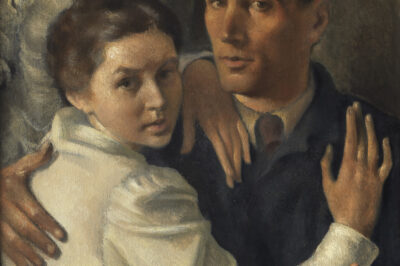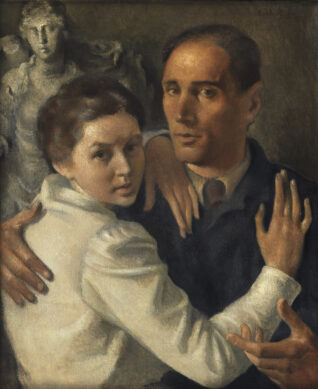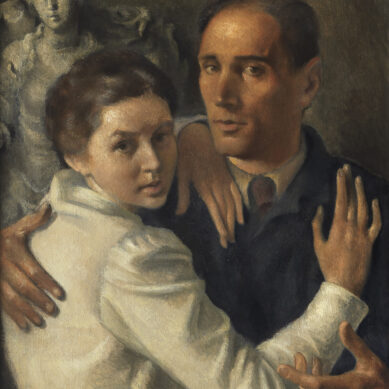You searched
Painter
Carlo Sbisà
Are you interested in the sales or the purchase of his artworks?
We buy works of this artist
and of other painters and sculptors from the 16th century to the first half of the 20th century
The Berardi gallery offers a free and without obligation service for evaluation of ancient and modern art . To find your way in the art market, very complex and full of nuances, it is better to rely on a professional consultant who can answer fast and concretely to your needs. The clarity of the answers will resolve effectively the need to estimate or sell an asset.
Contact us immediately without commitment
Answers also in 24 hours:
Carlo Sbisà
Carlo Sbisà
Carlo Sbisà was born in Trieste in 1899, attended the Technical Institute for a year and began working as a goldsmith and chiseller in Janesich’s workshop. He then moved to Budapest where he worked as a machine designer. In the Hungarian city he frequented the museums a lot, where he admired the works of the Venetian colourists and became passionate about the art of painting. Thanks to a scholarship, he moved to Florence in 1919 where he attended the Academy, but it was his ties with Carena, Oppi and Funi that directed him towards the study of Renaissance art. He would settle in the Tuscan city for the next nine years, continuing to study and work, adhering to the Novecento movement of the return to order.
The Painting Beginnings of Carlo Sbisà
In 1928, he decided to return to his hometown and held his first solo exhibition at the Galleria Michelazzi in Trieste, where Italo Svevo introduced him. The following year he went to Milan where Margherita Sarfatti’s group gravitated and he began to obtain his first recognitions and participation in national exhibitions.
In 1922 he participated in the Venice Biennale with Ritratto, and in the following edition he exhibited two Ritratti. In 1926 he was a guest artist with Elisabetta e Maria and Ritratto femminile, but it was in 1928, however, that Carlo Sbisà established himself as a leading figure of the Italian 20th century with the work La Venere della scaletta presented at the Biennale.
Carlo Sbisà would return to the Venetian event in 1930 with two works La disegnatrice and Iphigenia, and then in 1932 with Ritratto dell’amico, La Venere del navicello and Ritratto del palombaro. In 1934 he exhibited Fanciulla sul molo, Ninfa costiera and Venere pescatrice.
The artist was also present at the Rome Quadriennale in 1931 with La nuotatrice; at the Mostra del sindacato fascista held in Florence exhibiting La Venere delle Conchiglie and during the war years he participated in the Mostra del sindacato fascista organised in Milan in 1941 with Ninfa marina and Le grandi conchiglie.
He then returned to the Venice Biennale in 1948 exhibiting Modella che si rivesta, Borsa e cartocci and Modella in riposo. He would also participate in the Biennale in 1950 with Portrait of a Young Woman.
From the very beginning, Carlo Sbisà’s painting is characterised by an explicit reference to the Tuscan Renaissance, mindful of the years he spent in Florence, and the figures with solid volumes are cast in luminous and suspended atmospheres, with particular attention to colour rendering.
Portraits and the Art of Fresco: Magic Realism
Carlo Sbisà also proved himself adept in the art of portraiture, referring to his friends or acquaintances for the faces of some of his characters. In fact, in the aforementioned painting The Draughtswoman, Carlo Sbisà portrays Felicita Frai; or in the work The Architect, he portrays Umberto Nordio in the guise of the protagonist; he immortalises another portrait in the work The Chemist, which has the likeness of Domenico Costa. The two 1931 paintings Il palombaro (The Diver) and Il motociclista (The Biker) are instead a homage to his friend Arturo Nathan, and in these two works there is an added note of colour in addition to the graphic purity.
In the 1930s, Carlo Sbisà also experimented with the technique of fresco painting, a practice that saw him engaged until the 1940s. Carlo Sbisà had a conception of art at the service of society, and the fresco technique lent itself well to this purpose, just as it was conceived in his beloved Renaissance. Many public and private buildings in Milan, Rome and especially Trieste preserve his frescoed ceilings.
Carlo Sbisà’s diverse production and his connection to Trieste
In the post-war period, Carlo Sbisà abandoned painting and devoted himself to sculpture in terracotta, stone, majolica and bronze, works in which a Cubist influence and attention to composition shine through. His sculptural works were also presented at the 1952 and 1958 Venice Biennales. The artist participated in the applied and decorative art section with ceramic vases. In 1959, the Municipal Gallery of Trieste hosted a solo exhibition of his sculptures. His sculptural works in bronze or terracotta also adorn religious buildings in Friuli Venezia Giulia such as the Church of Saints Ermacora and Fortunato, the chapel of the Central Station and the Church of the Blessed Virgin of Succour in Trieste.
Carlo Sbisà’s activity is very heterogeneous; in his last period he also devoted himself to mosaic art, as in the church of Grignano. The bond with his hometown is very strong, Carlo Sbisà in fact became curator of the Revoltella Museum, a teacher at the Free School of Nude, a member of the committee for the Municipal Art Room and founded the Free School of Etching, born from his youthful passion for graphics. Carlo Sbisà died in Trieste in 1964.
Emanuela Di Vivona






